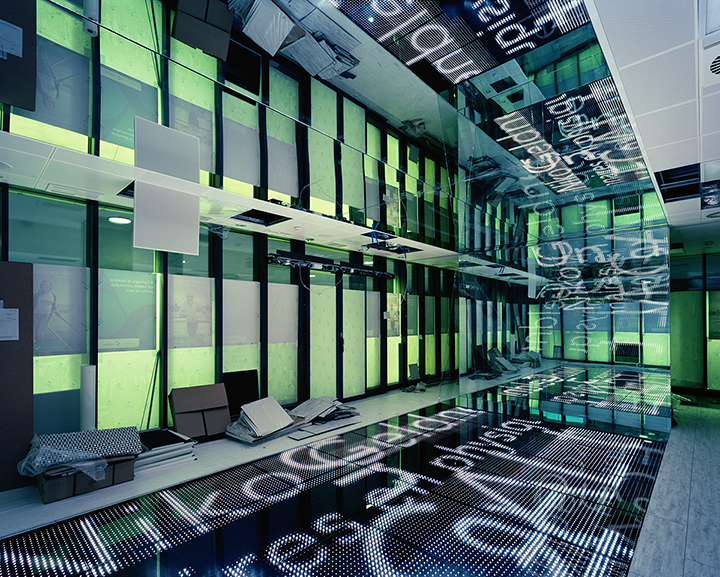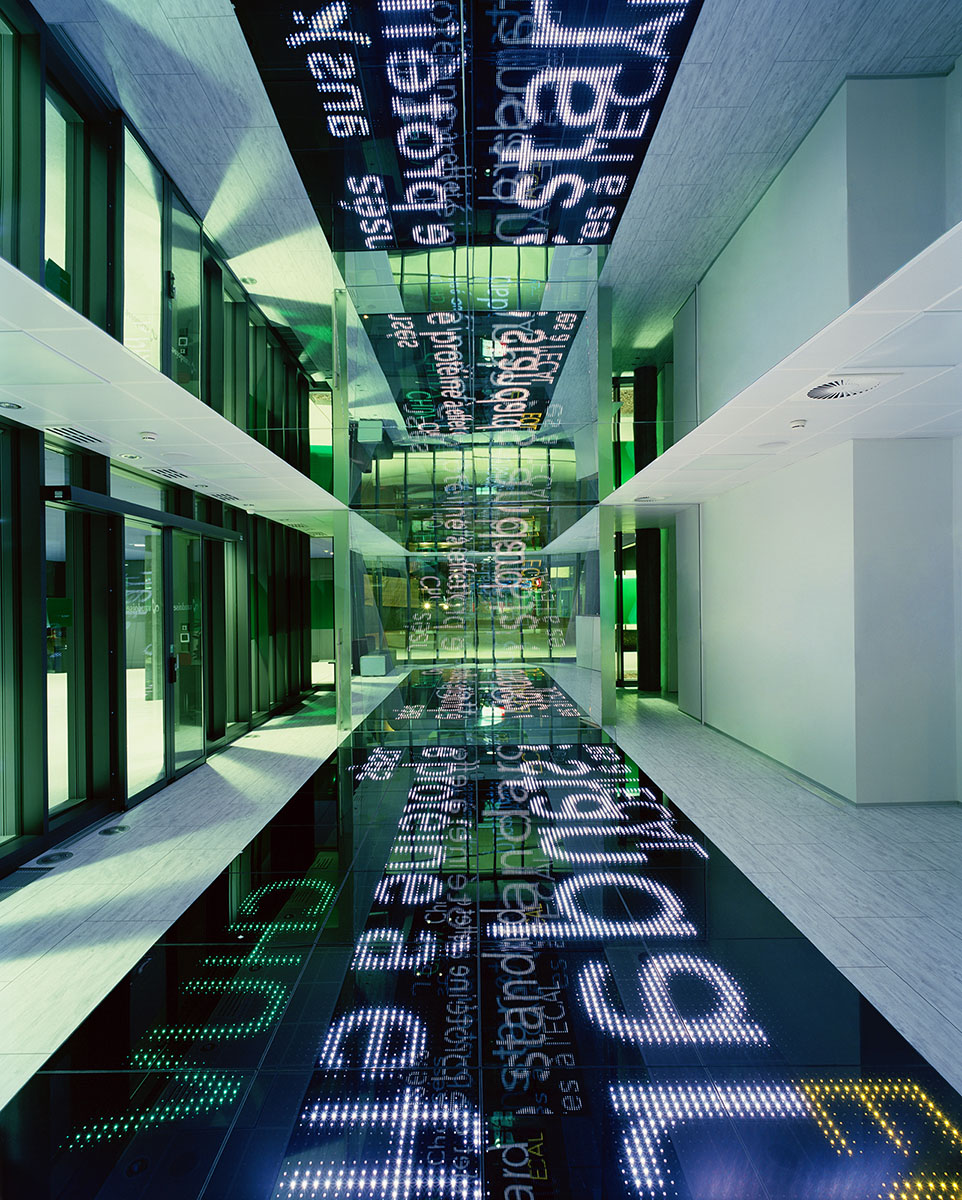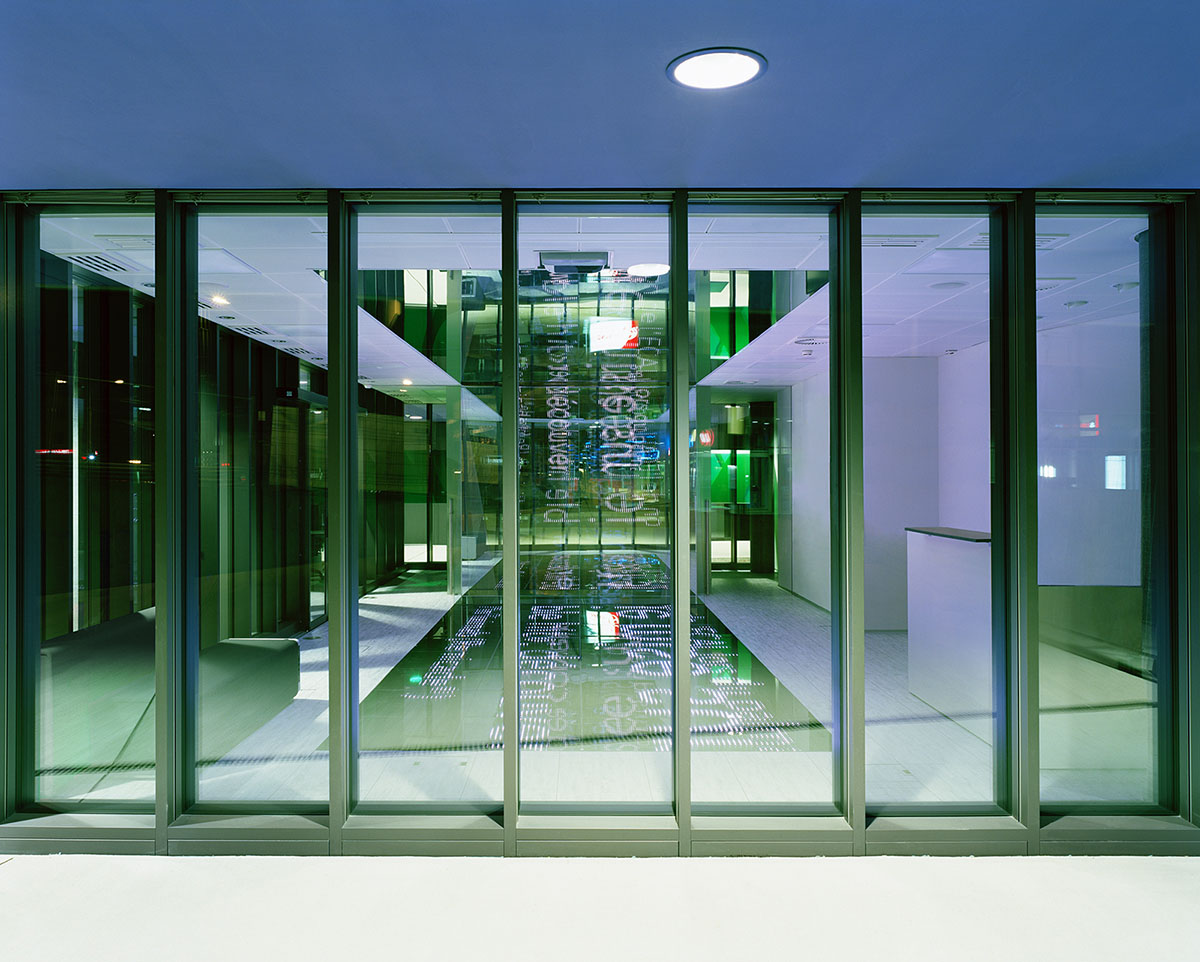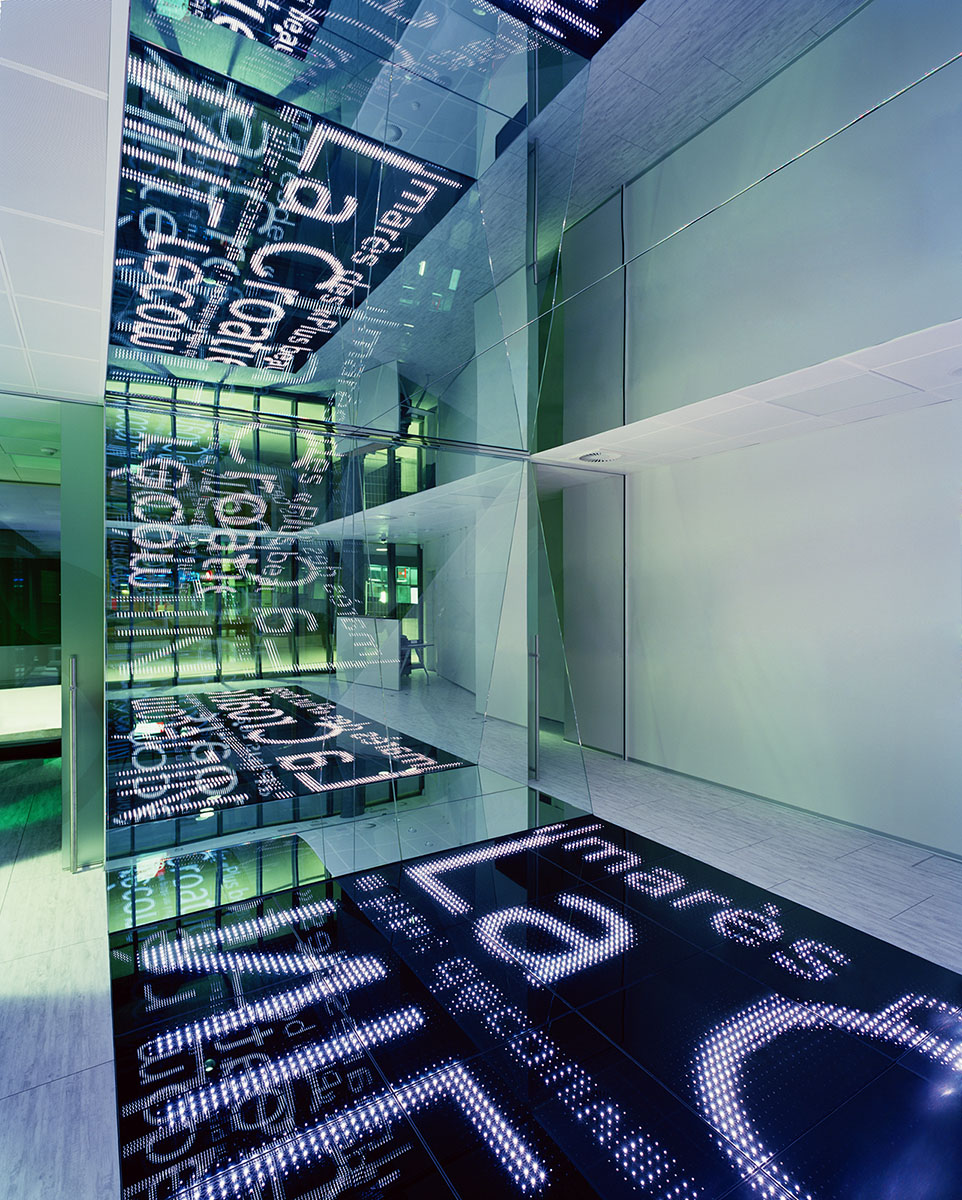PROJECT
The context of the project adds yet another dimension: sitting at the outskirts of the town, at the initial station of the Town’s subway line, it aims to improve the perception of an urban environment. Entering in town proposes an experience of density of physical spaces, objects and encounters, and likewise of knowledge and information production. The project questions how one perceives such an experience in that it literally streams information into a public space.
In order to create a clear and powerful spatial setup, the project sets forth a simple parameter: the space for displaying information will be the entire space available on location, thus bringing the body in correlation with the text flow itself. Porte des Savoirs is playing on the scale and the movement of the text flow in critical relation to the perceiver/reader’s body in space. Through size, speed and movement of the flow of information and the direct visual and physical contact of the observer with the text – he or she is literally standing on rivers of information – a bodily relation between messages sent and receiver is established. Spatially this relation is brought to its radical consequence in that any spatial boundary in the vertical is dissolved. In a kaleidoscope where the only horizontals, that could provide stability and support, are the bands of text that travel through an endless space mirroring itself in reflecting surfaces on the floor, ceiling and wall.
Light and contrast emitted by the 25 m2 screen-floor suspend the reader/observer in a void. The visual stimuli that act at precise speed engage with one’s sense of gravity: the body – suspended between these breathing bands of information – loses sense of time and presence.
The installation plays with different levels of our perception: one flow of content is always optimized for reading, putting an emphasis on the meaning of information, as the other lines play with scales, rhythms and accelerations to create a landscape of sensation.
The interactive features of the installation, through the sensitive floor, induce a relation between the visitors, the content to read and the immersive dimension. It activates readings in different depths in mirrored reflexions.
The partner, the Vaudoise Insurance, enters a new domain with this installation at the core of its new experimental agency: it brings its clients, and more generally people passing by in contact with a world of news emerging from the different universities in Town, nurturing the installation in real time. Vaudoise Insurance, whose core business is anticipating risks and helping to make lifelong choices, is thus linked to the sources of knowledge building the future.
Ultimately Porte des Savoirs plays on the dichotomy between the content of the information, and its aesthetic dimension – the appearance of text. Being immersed in the aesthetic and spatial dimension of these flows of information does not imply immersion in the content of that same information – this remains entirely the work of our imagination.
PICTURES





CREDITS
Architects
Dieter Dietz, Rudi Nieveen, Guillaume Othenin-Girard, ALICE EPFL
Interaction design
Nicolas Henchoz, Thibault Brevet, Tommaso Colombo, EPFL+ECAL Lab
Engineer
Delphines Ribes, EPFL+ECAL Lab
Construction Company
Stahl & Traumfabrik AG
Interactive LED screens
UTRAM (integrator)
EKTA Company (manufacturer)
Photo credits
Joel Tettamanti
courtesy of EPFL+ECAL LAB / ALICE studio EPFL


